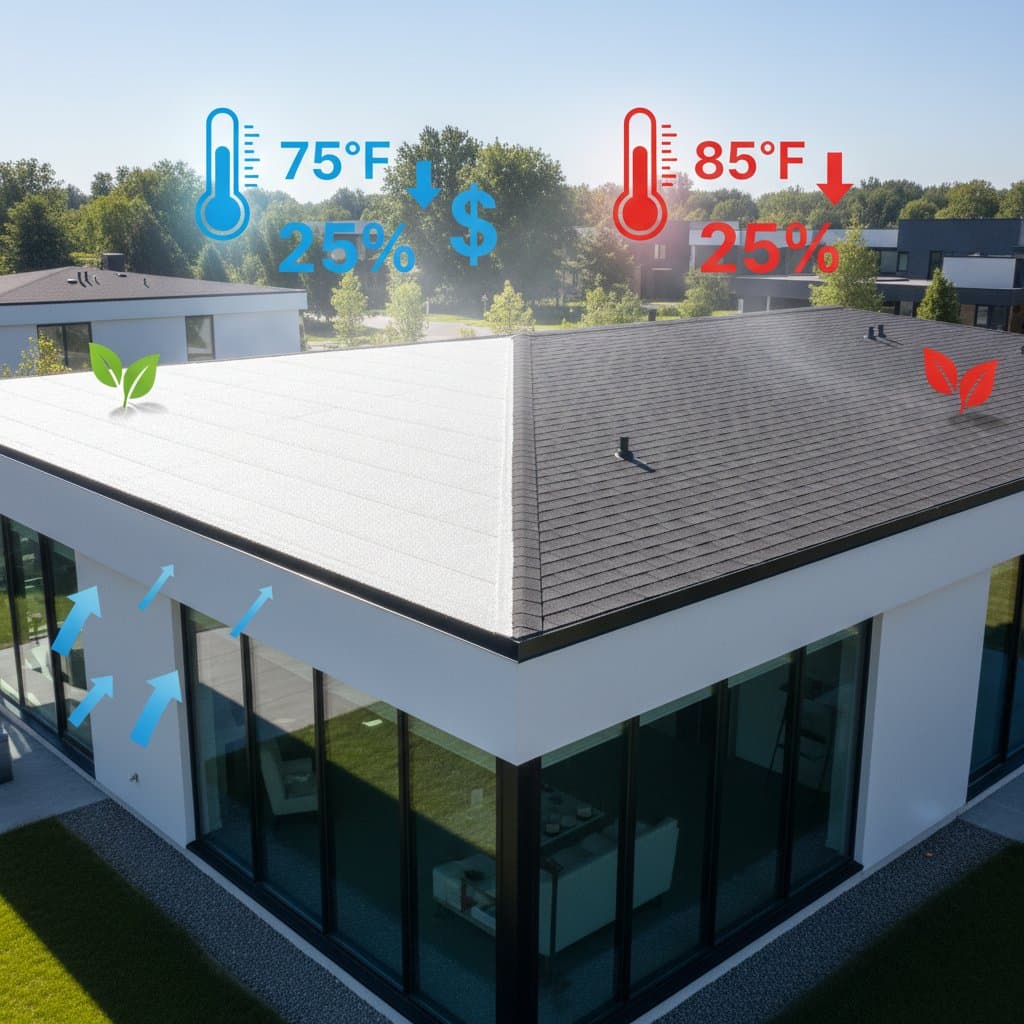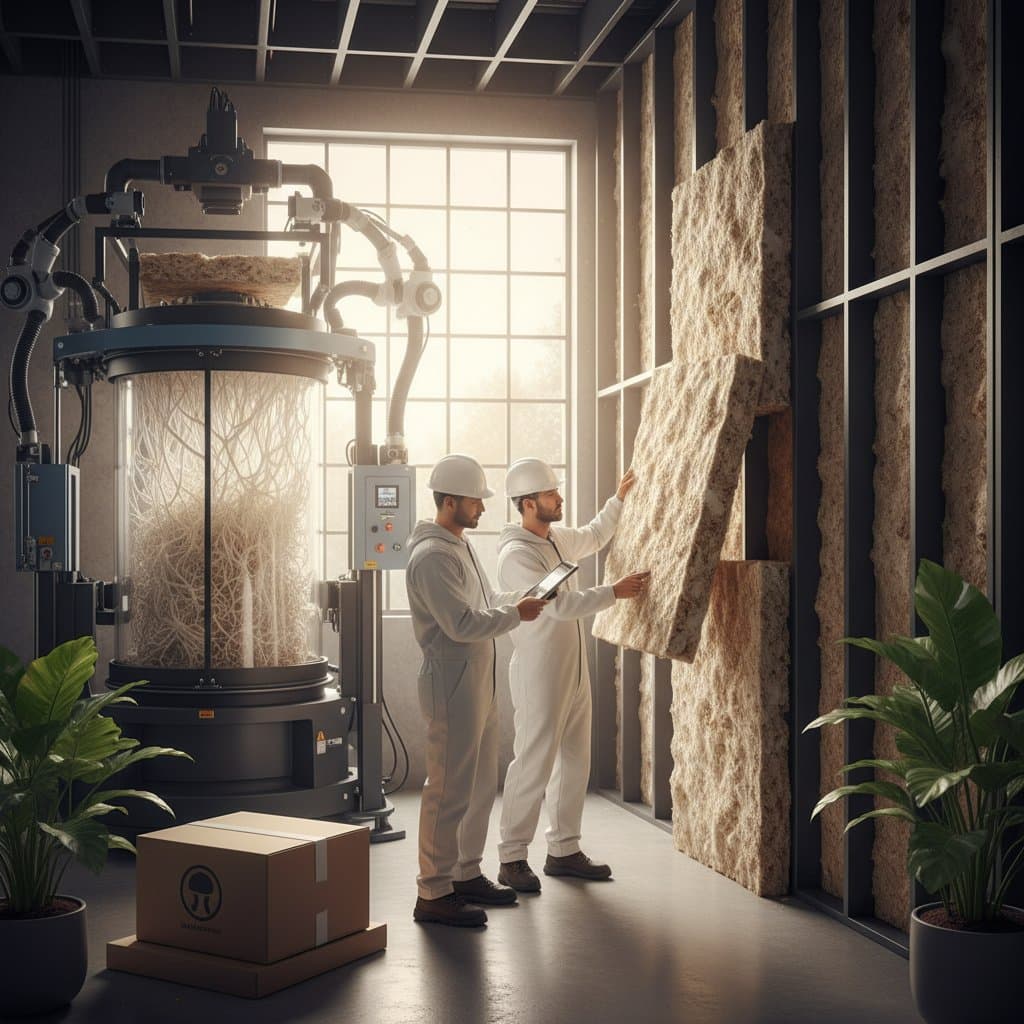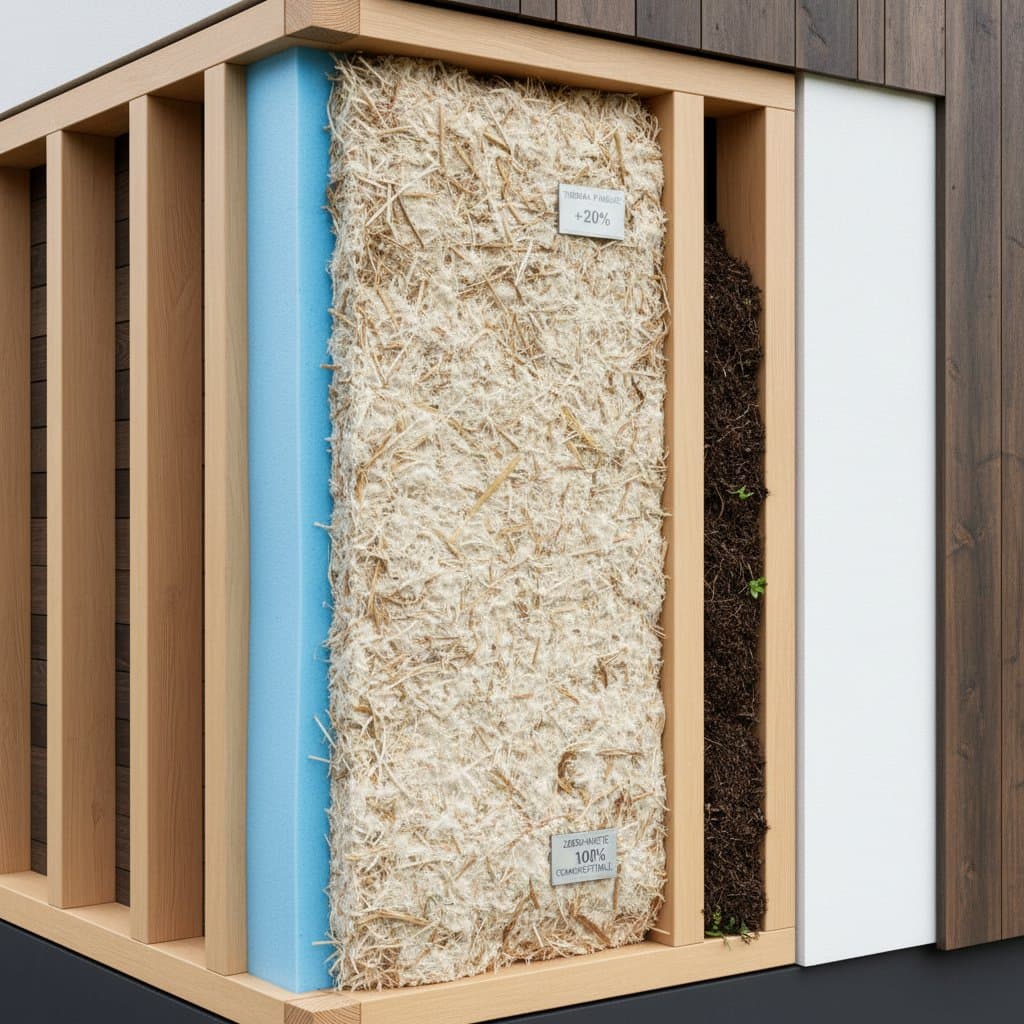Cool Roofs Reduce Air Conditioning Costs by 25 Percent in 2025 Heat Waves
Air conditioners often operate continuously during intense heat waves, leading to substantial increases in energy expenses. Homeowners and commercial property managers increasingly adopt cool roof technology to counter this challenge. This approach reflects sunlight away from the building, which reduces indoor heat buildup and lowers overall energy consumption.
Essential Benefits
Cool roofs deliver measurable advantages in high-temperature environments. Property owners experience significant relief from rising utility bills and improved building performance.
- Cool roofs decrease air conditioning expenses by up to 25 percent under extreme heat.
- These roofs maintain surface temperatures 50 degrees Fahrenheit cooler than conventional dark roofs.
- Utility rebates and municipal programs offset 10 to 30 percent of installation expenses.
- Thermal expansion decreases, which prolongs roof durability and mitigates urban heat islands.
- Residential and commercial structures alike achieve payback within three to seven years, influenced by local energy prices and weather patterns.
Roofing Material Comparisons
Selecting the right roofing type hinges on reflectance and emittance properties. Field research from building science experts in hot climates validates these performance metrics.
| Roofing Type | Typical Reflectance | Typical Emittance | Average Surface Temp on Hot Day | Relative Energy Savings |
|---|---|---|---|---|
| Dark Asphalt Shingle | 0.05 - 0.15 | 0.85 | 150°F - 190°F | Baseline |
| White TPO Membrane | 0.70 - 0.85 | 0.90 | 110°F - 130°F | 20% - 25% |
| Cool-Coated Metal Roof | 0.60 - 0.75 | 0.80 | 120°F - 140°F | 15% - 20% |
| Reflective Tile or Shingle | 0.50 - 0.65 | 0.85 | 130°F - 150°F | 10% - 18% |
Reflective options consistently outperform standard materials, particularly when cooling demands peak.
Core Materials for Cool Roofs
Effective cool roofs rely on materials that balance reflectivity with practical application. Each type suits specific building needs and budgets.
Reflective Roof Coatings
Liquid coatings, formulated from acrylic, silicone, or polyurethane, form a durable reflective surface over existing roofs. Installation costs range from 1.50 to 3.00 dollars per square foot, making this a budget-friendly retrofit. Professionals emphasize thorough surface cleaning to maximize adhesion and extend service life up to 10 years.
Single-Ply Membranes
TPO and PVC membranes provide high reflectivity for flat commercial roofs. These materials install at 5 to 8 dollars per square foot and resist weathering effectively. Their 20- to 30-year lifespan justifies the upfront cost through sustained energy reductions.
Cool Asphalt Shingles
Shingles embedded with reflective granules mimic traditional designs while boosting efficiency. They reflect up to 30 percent of sunlight, far exceeding the 10 percent of standard versions. Homeowners appreciate their seamless integration into sloped residential roofs.
Metal Roofing Systems
Coated metal roofs offer superior longevity, lasting 40 to 70 years with maintenance. Reflectance levels reach 60 to 75 percent, and installation prices fall between 8 and 14 dollars per square foot. This option excels in varied climates, from coastal to arid regions.
Available Incentives
Governments and utilities promote cool roofs with targeted financial support. These programs accelerate adoption by reducing out-of-pocket expenses.
- Rebates provide 0.20 to 0.60 dollars per square foot for verified reflective products.
- Tax credits cover up to 10 percent of costs for qualifying energy upgrades.
- Streamlined permitting processes benefit new constructions incorporating these systems.
Consult local codes, as some areas mandate minimum reflectance for commercial projects. The Cool Roof Rating Council offers resources on compliant materials.
Installation Guidelines
Proper execution ensures optimal results and minimizes future issues. Follow these steps for a successful project.
- Conduct a full inspection to repair leaks or structural weaknesses first.
- Select materials certified by organizations like the Cool Roof Rating Council or ENERGY STAR.
- Verify drainage systems prevent water pooling, which erodes coatings over time.
- Engage contractors experienced in reflective applications for precise techniques.
- Monitor energy usage pre- and post-installation to quantify benefits and support rebate claims.
Such documentation also aids in pursuing certifications for sustainable buildings.
Calculating Return on Investment
Cool roofs yield enduring financial and environmental gains. Payback timelines of three to seven years give way to ongoing savings.
Property managers apply life-cycle analyses to assess total expenses. These evaluations reveal 15 to 25 percent reductions in ownership costs, accounting for maintenance, roof longevity, and HVAC efficiency. Resale values rise as buyers seek sustainable features that promise lower bills.
Steps to Implement a Cool Roof
Evaluate your roof's current state and review past energy statements to gauge potential savings. Solicit bids from specialists in reflective technologies, weighing warranties and rebate eligibility alongside costs. Proceed with installation timed before peak summer heat to maximize immediate benefits and comfort.










